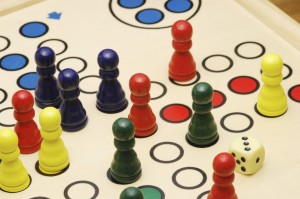
We teach at university level and so, for some, should be delivering courses like other subject teachers. This is quite difficult if you are a TEFLer who has been trained to use fun course books and games to motivate students in every lesson. In fact, my own CELTA tutor would plot the enjoyment level of students throughout my lessons. But is there some middle ground we can occupy so we can be accepted by academic colleagues without abandoning all our methodologies and techniques?
 For some, this kind of TEFL approach is only suited to language schools and has no place in an academic situation where students are working towards degrees, doing research and, in many countries, paying a lot to do so. The TEFL teacher is in danger of looking like a clown and having his or her methods ridiculed. Yes, they may get results, especially when the more ‘relaxed’ TEFL classroom is a perfect antidote to the stressful academic life many students live in. However, to be accepted and respected, a substantial degree of change seems valuable.
For some, this kind of TEFL approach is only suited to language schools and has no place in an academic situation where students are working towards degrees, doing research and, in many countries, paying a lot to do so. The TEFL teacher is in danger of looking like a clown and having his or her methods ridiculed. Yes, they may get results, especially when the more ‘relaxed’ TEFL classroom is a perfect antidote to the stressful academic life many students live in. However, to be accepted and respected, a substantial degree of change seems valuable.
Any English class can be enjoyable and even ‘fun’ if you have a good relationship with the students. I have seen many TEFL lessons fail, even when the teachers did games, group work and running around. I have also witnessed very static classes where students sat at desks but also had a good time. For me, at the start of my TEFL career, I think I relied a lot on games and tempo, coupled with metalanguage i.e. chatting and the occasional joke, which became normal and eventually a bit boring. Whether these components were educational, or just tempo or motivation builders, is another matter.
 The university classroom can be enjoyable or as ‘fun’ as you wish to make it but you should, in my opinion, set some very clear boundaries based on what the general university culture is. You don’t want famous PhD scholars seeing you as the person who makes students run around picking up bits of paper with words on just for the fun of it. However, they may be impressed if you use more pedagogically justifiable physical activities alongside task-based language learning. This, coupled with movement that appeals to kinaesthetic learners and learning styles, can be especially impressive when it makes a positive impact on the students and their grades.
The university classroom can be enjoyable or as ‘fun’ as you wish to make it but you should, in my opinion, set some very clear boundaries based on what the general university culture is. You don’t want famous PhD scholars seeing you as the person who makes students run around picking up bits of paper with words on just for the fun of it. However, they may be impressed if you use more pedagogically justifiable physical activities alongside task-based language learning. This, coupled with movement that appeals to kinaesthetic learners and learning styles, can be especially impressive when it makes a positive impact on the students and their grades.


